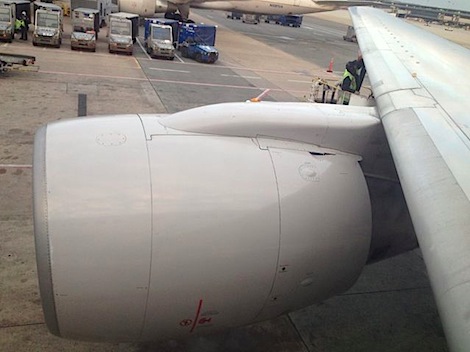Is Air Travel the Ultimate Environmental Sin?
A v ery interesting article in this Sunday’s New York Times. It states that air travel is the highest carbon emission activity a human being can take. A trans-Atlantic (TATL) or Trans-continental (TCON) flight across the US, can generate 2 to 3 tons of Carbon Emissions! I am not an extreme left wing environmentalist by any measure, but I care about the environment. I believe that we owe our future generations a planet that is in shape good enough to live in. This article is disconcerting. Now, I drive a lot, so over a year my car created emissions are probably much higher than my flight emissions. But I am concerned.
ery interesting article in this Sunday’s New York Times. It states that air travel is the highest carbon emission activity a human being can take. A trans-Atlantic (TATL) or Trans-continental (TCON) flight across the US, can generate 2 to 3 tons of Carbon Emissions! I am not an extreme left wing environmentalist by any measure, but I care about the environment. I believe that we owe our future generations a planet that is in shape good enough to live in. This article is disconcerting. Now, I drive a lot, so over a year my car created emissions are probably much higher than my flight emissions. But I am concerned.
But what can we as passengers do? The article is promoting Carbon Credits, that will add to the price of flights. As someone who relies on flying to support my income, that is a challenge for me. It will also hurt the US airline industry that is already in trouble.
The solution, I believe is to fly less. Avoid air travel except as a last resort. Flying aircraft like the 787 (once it is un-grounded) is also preferred as it is much more fuel efficient.
And yes, tell Al Gore to stop flying in a private jet…
Share your thoughts by leaving a comment below.
Subscribe to get updates via email. Subscribe to get updates via RSS.
Join more than 6,000 followers we have on Twitter and Facebook and get regular updates on Airline Miles, the Airline Industry and other travel related stuff.

Airplanes burn far more fuel per mile at take-off then while cruising, so international travel is not the problem. It’s the millions of small domestic flights. There should be more high-speed rail instead of 100mile commuter flights.
I wonder how the per-seat breakdowns are, and how it compares to other modes of transit for the same distance (not the same time).
Airlines have done well to modernize their fleets with efficient planes, but there is always more to do. Perhaps this country can expand quality, fast, and cheap rail service to end the shuttle flights that congest airspace and primarily serve us “mileage/loyalty seekers” instead of rational people who would pick the calmer, cheaper, faster option.
I will not fly on 787. Read Vince Weldon’s letter to FAA about the Dreamliner. This plane is UNSAFE in a lot of senses, and I say this as an engineer. Composites are fine for select applications like military aircraft or lesser components, but NOT for the fuselage of a civilian passenger jet. If I got to a gate and there were an equipment change to 787 I would be immediately finding an alternate flight. I’d rather take fewer flights on a 737/757.
@Rick, @Noah Thanks for sharing. I will look to see if I can find more per mile/per seat carbon emissions for aircraft. I agree that the short hops, especially on large aircraft and the big culprits here
Cars are faaaar worse than places … what we need is to discourage long road trips, even if your car is a hybrid.
Long distance land cargo haulers are worse than trains too, esp between major cities where rail and air options are abundant.
And third – institute landing cost schemes that encourages larger planes : 10x daily RJ is better flown by 5x 737, and 15x 737-900s can be consolidated to 10x A330s.
Carriers in the US have stupid notions that if they offer 12x daily instead of 14x daily, they would bleed business passengers to the competition.
@Vicente – as a fellow engineer I feel perfectly fine flying the dreamliner again once it is un-grounded. And yes, I said again. I flew it from Japan to the US and it was a great experience and a great plane. All new systems especially as complicated as a new airplane go through a “teething” stage of sorts after launch. Composites are a great future technology for the airline industry and I see no problems with them for commercial flight.
There is something everyone can do about carbon emissions on an individual level – install solar panels (or another form of green energy) on your home. I’m leasing solar panels through a company called SolarCity (there isn’t the huge installation expense). I’ve had them just over a month, and according to the output data, they have offset 313 pounds of CO2 since installation. This is in Colorado during the winter solstice months.
@vicente – I guess you’d better not fly the A320 series either then since it also has composite components. I’m actually a little less happy about the complete reliance on electronics rather than fluid on this design. If there is no juice, what are you going to do if all your back up systems are electronic as well?
So glad that many will fly less – more upgrades for me. Funny, I still sleep well at night…